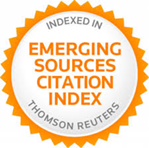The Illegible Pampas: Space and Narration in Samanta Schweblin’s Distancia de rescate
DOI:
https://doi.org/10.37536/preh.2023.11.2.1060Keywords:
Schweblin, Illegibility, Dialogic Narration, Imperceptible ViolenceAbstract
Distancia de rescate by Samanta Schweblin is part of a long tradition of texts about the Argentine pampas and undertakes a fundamental intervention by showing how this space has become illegible and proposing new ways to navigate and narrate it. The novel responds to the question of how to read a space that has undergone transformations that are imperceptible at first glance and were caused by agrochemical contamination. In its response, the novel questions the ability of the intentional subject to narrate an unfamiliar space and resorts to a second voice to assist it. What emerges then is a form of dialogic narration or ecological reading that moves away from the position of authority and approaches a form of listening, which not only stands in solidarity with the human but goes beyond the subject and reads from and with the environment. Distancia de rescate aims to address the aesthetic challenge of narrating forms of violence that resist representation, and, in this process, first-hand experience becomes the parameter that defines knowledge. At the same time, it proposes a function of fiction in the present: to make visible processes of violence that are imperceptible to our senses, to name new dangers, and to try to make the opacity of space legible through a new relationship with space and a renewed relevance and urgency of narration. Ultimately, what the novel shows is that space is not a backdrop upon which narration is inscribed but has specific, invisible forms of agency.
References
Andermann, Jens (2018). “Introduction”, in Natura: Environmental Aesthetics After Landscape, ed. Jens Andermann, Lisa Blackmore y Dayron Carrillo Morell. Zurich: Diaphanes, 1-22.
Benjamin, Walter (1989). Discursos interrumpidos I. Buenos Aires: Taurus.
Bridle, James (2018). New Dark Age: Technology, Knowledge and the End of the Future. Nueva York: Verso.
Chakrabarty, Dipesh (2009). “The Climate of History: Four Theses”. Critical inquiry, 35(2): 197-222. DOI: https://doi.org/10.1086/596640.
Curtius, Ernst Robert (1953). European Literature and the Latin Middle Ages. Nueva York: Pantheon Books.
Danowski, Déborah y Eduardo Viveiros de Castro (2019). ¿Hay mundo por venir? Buenos Aires: Caja negra.
De Leone, Lucía (2016). “Imaginaciones rurales argentinas: el campo como zona de cruce en expresiones artísticas contemporáneas”. Cuadernos de literatura, 20(40): 181-203. DOI: https://doi.org/10.11144/Javeriana.cl20-40.irac
De Leone, Lucía (2017). “Campos que matan. Espacios, tiempos y narración en Distancia de rescate de Samanta Schweblin”. 452ºF. Revista de teoría de la literatura y literatura comparada, 16: 62–76. <https://raco.cat/index.php/452F/article/view/318768> (23 de marzo de 2022).
Drucaroff, Elsa (2017). “Ricardo Piglia, la máquina de invención política y la civilibarbarie”. HeLix-Dossiers zur romanischen Literaturwissenschaft, 10: 68-87.
González Dinamarca, Rodrigo (2015). “Los niños monstruo en El orfanato de Juan Antonio Bayona y Distancia de Rescate de Samanta Schweblin. Brumal. Revista de investigación sobre lo fantástico, 3(2): 89-106. DOI: http://dx.doi.org/10.5565/rev/brumal.249
Heffes, Gisela (2020). “Toxic Nature in Contemporary Argentine Narratives. Contaminated Bodies and Ecomutations”, in Ecofictions, Ecorealities, and Slow Violence in Latin America and the Latinx World, ed. Ilka Kressner, Ana María Mutis y Elizabeth Pettinaroli. Nueva York: Routledge, 55-73. DOI: https://doi.org/10.4324/9781003001775-3
Klein, Julius (1920). The Mesta: A Study in Spanish Economic History, 1273-1836. Cambridge: Harvard University Press. DOI: https://doi.org/10.4159/harvard.9780674337206
Latour, Bruno (2017). Facing Gaia: Eight Lectures on the New Climatic Regime. Cambridge: Polity.
Ludmer, Josefina (2010). Aquí América latina: una especulación. Buenos Aires: Eterna Cadencia.
Malm, Andreas (2016). Fossil capital. Nueva York: Verso.
Martínez Estrada, Ezequiel (1993). Radiografía de la pampa. Buenos Aires: Fondo de Cultura Económica.
Morton, Timothy (2013). Hyperobjects: Philosophy and Ecology After the End of the World. Minneapolis: University of Minnesota Press.
Mutis, Ana María (2020). “Monsters and Agritoxins: The Environmental Gothic in Samanta Schweblin’s Distancia de rescate”, in Ecofictions, Ecorealities, and Slow Violence in Latin America and the Latinx World, ed. Ilka Kressner, Ana María Mutis y Elizabeth Pettinaroli. Nueva York: Routledge, 39-52. DOI: https://doi.org/10.4324/9781003001775-2
Nixon, Rob (2011). Slow Violence and the Environmentalism of the Poor. Cambridge: Harvard University Press. DOI: https://doi.org/10.4159/harvard.9780674061194
Pérez Cano, Tania (2016). Imposibilidad del beatus ille: Representaciones de la crisis ecológica en España y América Latina. Leiden: Almenara.
Piglia, Ricardo (2000). Crítica y ficción. Buenos Aires: Seix Barral.
Rama, Ángel (1984). La ciudad letrada. Hanover: Ediciones del Norte.
Rigby, Catherine (2015). Dancing with Disaster: Environmental Histories, Narratives, and Ethics for Perilous Times. Charlottesville: University of Virginia Press.
Rodríguez, Fermín (2010). Un desierto para la nación: la escritura del vacío. Buenos Aires: Eterna Cadencia Editora.
Schweblin, Samanta (2014). Distancia de rescate. Buenos Aires: Literatura Random House.
Scott, James (1998). Seeing Like a State: How Certain Schemes to Improve the Human Condition Have Failed. New Haven: Yale University Press.
Sobchack, Vivian Carol (2004). Carnal Thoughts: Embodiment and Moving Image Culture. Berkeley: University of California Press. DOI: https://doi.org/10.1525/9780520937826
Stengers, Isabelle (2015). In Catastrophic Times: Resisting the Coming Barbarism. Londres: Open Humanities Press.
Svampa, Maristella y Enrique Viale (2014). Maldesarrollo: La Argentina del extractivismo y el despojo. Buenos Aires: Katz. DOI: https://doi.org/10.2307/j.ctvm7bcs8
Vermeulen, Pieter (2020). Literature and the Anthropocene. Nueva York: Routledge. DOI: https://doi.org/10.4324/9781351005425
Virilio, Paul (2000). A Landscape of Events. Cambridge: MIT Press.
Downloads
Published
How to Cite
Issue
Section
License
Copyright (c) 2022 Pasavento. Revista de Estudios Hispánicos

This work is licensed under a Creative Commons Attribution 4.0 International License.








